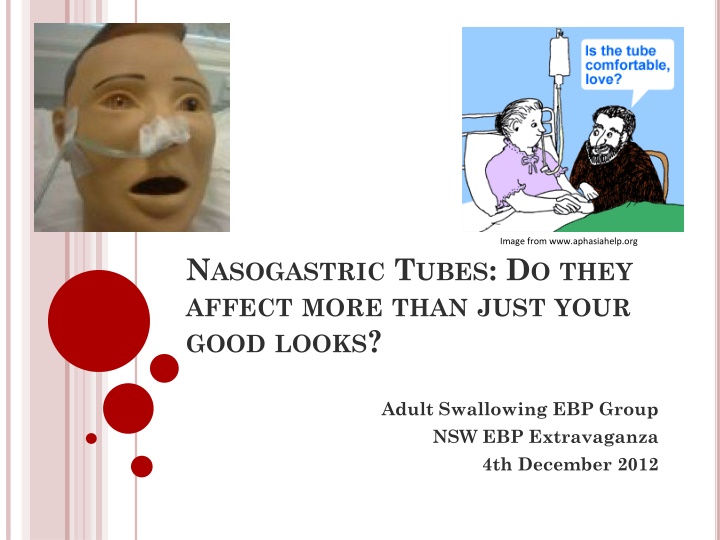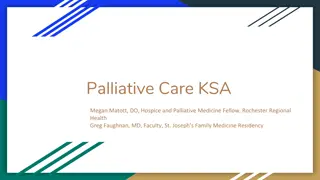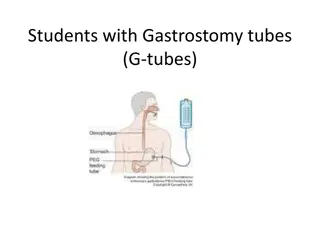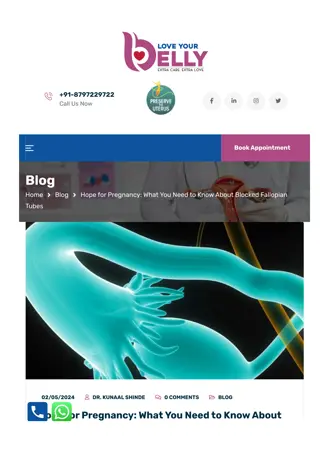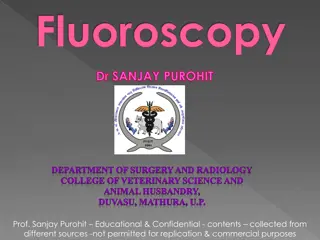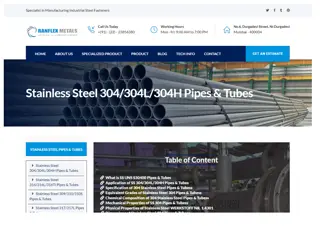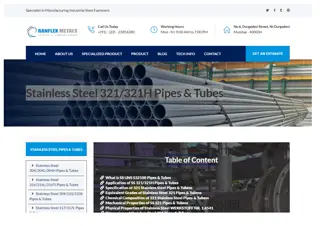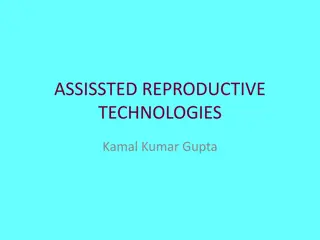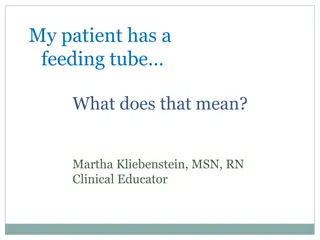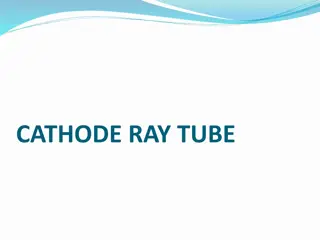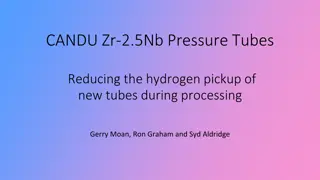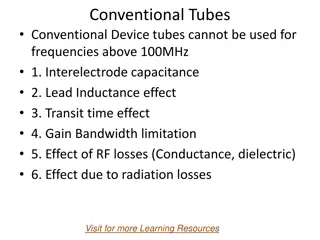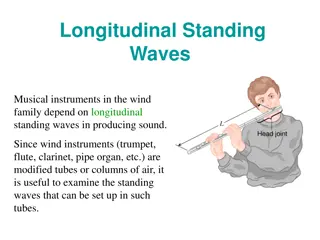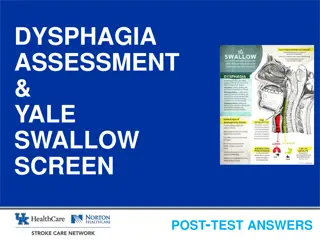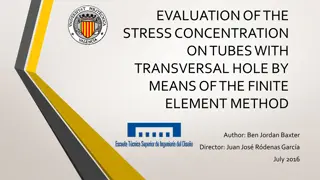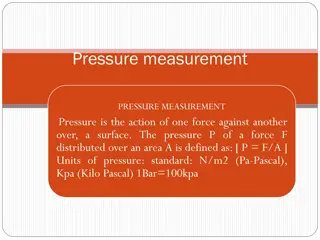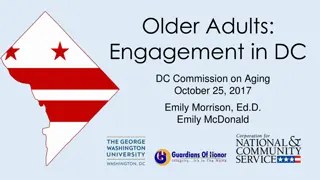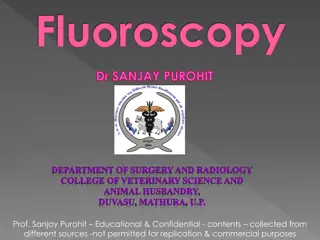Impact of Nasogastric Tubes on Swallow Function in Adults
Nasogastric tubes (NGT) are commonly used for nutrition, hydration, and medication administration but may have negative effects on swallow function in adults. Limited literature explores this association, with clinical considerations including NGT size and duration in situ. Several studies have investigated the impact of NGT on dysphagia and aspiration risk in stroke patients and healthy adults. This summary provides an overview of relevant research findings on the influence of NGT on swallowing function.
Download Presentation

Please find below an Image/Link to download the presentation.
The content on the website is provided AS IS for your information and personal use only. It may not be sold, licensed, or shared on other websites without obtaining consent from the author.If you encounter any issues during the download, it is possible that the publisher has removed the file from their server.
You are allowed to download the files provided on this website for personal or commercial use, subject to the condition that they are used lawfully. All files are the property of their respective owners.
The content on the website is provided AS IS for your information and personal use only. It may not be sold, licensed, or shared on other websites without obtaining consent from the author.
E N D
Presentation Transcript
Image from www.aphasiahelp.org NASOGASTRIC TUBES: DO THEY AFFECT MORE THAN JUST YOUR GOOD LOOKS? Adult Swallowing EBP Group NSW EBP Extravaganza 4th December 2012
PRESENTATION OUTLINE Background Clinical question External evidence: CAT process Internal evidence: clinical experience Clinical application
BACKGROUND Nasogastric tubes (NGT) common alternate mode of nutrition, hydration and medication administration Clinical experience dictates negative association between NGT and swallow function Paucity of literature Clinical considerations: - fine bore versus large bore - duration in situ Previously investigated by Central Sydney Area clinical network in 2008
CLINICAL QUESTION What is the impact of nasogastric tubes on swallow function in adults?
CAPPED ARTICLES Dziewas, R., Warnecke, T., Hamacher, C., Oelenberg, S., Teismann, I., Kraemer, C., Ritter, M., Ringelstein, E.B., & Shaebitz, W.R., (2008). Do nasogastric tubes worsen dysphagia in patients with acute stroke? BMC Neurology, 8:28 Fattal, M., Suiterm D.M., Warner, H.L., & Leder, S.B., (2011). Effect of presence/ absence of a nasogastric tube in the same person on incidence of aspiration.Otolaryngology Head & Neck Surgery, 145:5, pp796-800 Huggins, P.S., Tuomi, S.K., & Young, C., (1999). Effects of nasogastric tubes on the young, normal swallowing mechanism. Dysphagia, 14:3, pp157-161 Leder, S.B., & Suiter, D.M., (2008). Effects of nasogastric tubes on incidence of aspiration.Archives of Physical & Medical Rehabilitation, 89 Wang, T., Wu, M., Chang, Y., Hsiao, T., & Lien, I., (2006). The effect of nasogastric tubes on swallowing function in persons with dysphagia following stroke. Archives of Physical & Medical Rehabilitation, 87:9, pp1270-1273
SUMMARYOF CAPS Impact on Swallow? Outcome Measures Article Level Participants Method Results Dziewas et al, 2008 IV Part 1 100 Part 2 25 Stroke Part 1 Case series. Freq. & outcome of NGT misplacement. Part 2 Repeated measures design. Ax pre- & post-NGT insertion. FEES Incidence of aspiration. Salient endoscopic finding. Part 1 NGT coiled in pharynx = worsened dysphagia Part 2 Nil No Fattal et al, 2011 III-2 Grp 1 (21) w/ NGT Grp 2 (41) w/o NGT Mixed medical Crossover design. Pre- & post Ax w NGT removal ( Gr1) or insertion (Gr2). FEES Incidence of aspiration Nil No Huggins et al, 1999 IV 10 Young, healthy adults Repeated measures design. Three conditions: no NGT, fine bore, wide bore. VF 5 temporal and 3 non- temporal measures Wide bore = increased duration of 4/5 events Slight Fine bore > wide bore? Leder & Suiter, 2008 III-2 Grp 1 (630) w/ NGT Grp 2 (630) w/o NGT Mixed medical 7 year , prospective cohort series. Single instance Ax. FEES Incidence of aspiration Nil No Wang et al, 2006 IV 22 Stroke NGT insitu > 2 weeks Repeated measures design. Ax pre- & post- NGT removal. MBS timed & qualitative obs Nil No
EXTERNAL EVIDENCE: STRENGTHSAND LIMITATIONS Use of objective assessment tools Time frame parameters Rating scales Study design and bias Impact of NGT reviewed in healthy population Comparison of NGT size Varying participant populations
CLINICAL QUESTION: ANSWERED? Level of evidence III-2 or IV Clinical bottom line The current evidence says that there is no significant impact of nasogastric tubes on swallowing function in adults. But this didn t sit with our clinical judgment!
INTERNAL EVIDENCE Aim To explore the current viewpoints and practices of speech pathologists working in adult dysphagia in regards to our clinical question 10 question survey Distributed widely Analysis of data Limitations
RESULTS: DEMOGRAPHICS Demographics of Participants Years in adult dysphagia <1 2% Acute 1-3 years 20% Subacute 4-8 years 41% Rehab 8+ 36% Community Unknown 1% Majority work setting 77 27 37 13 Gen med/ surg 48 ICU/ critical care 31 Current caseload Aged Care 40 H&N 22 TBI 20 Neuro Rehab 67 Other 4 39
RESULTS: FREQUENCYOF IMPACT In your clinical experience, how often do you feel the presence of a nasogastric tube impacts on swallowing function? 70% 60 60% 50% % of Speech Pathologists 40% 30% 23 20% 12 10% 3 2 0 0% I don't know Never Rarely Sometimes Often Always
RESULTS: IMPACTOF NGTS Two predominant features: Altered sensation Pharyngeal residue Less predominant features: Swallow initiation Pharyngeal transit Epiglottic deflection UES opening Changes to mucosa Soft palate elevation and BOT to PPW approximation Interesting features: Oral preparatory phase difficulties (bolus acceptance) Increase in presence of reflux Decreased motivation for oral trials/swallow rehab
RESULTS: OBJECTIVE AX Objective Ax via MBS 43 Poor soft palate closure resulting in nasal regurgitation Pharyngeal residue Residue around the tube Multiple swallows to clear residue Reduced epiglottic deflection due to the presence of the NGT Objective Ax via FEES 10 Oedema of the posterior arytenoids Ulceration of the laryngeal surface of the epiglottis Narrowing of the valleculae and pyriform ? oedema due to NGT or the repeated re- insertions of NGT Dislocated cricoarytenoid joint No Objective Ax 54 Actually this is not possible to confirm unless one does an objective assessment before and immediately after the NGT has been removed and if there are no contributing factors, which of course there always is
RESULTS: TIMINGAND SIZE % of Speech Pathologists
RESULTS: REMOVING NGTS How often would you request the removal of an NGT during an objective swallowing assessment if you felt it was impacting on swallow function? Barriers: Reinsertion Don t agree with practice Resources Ongoing need for NGT Conflict with other staff, e.g. Dietitians Lack of evidence 45 41 40 Number of Speech Pathologists 34 35 30 Facilitators: Proactive and supportive teams, NS, pts and families Evidence of NGT impact Staff competence 25 20 17 15 10 6 5 2 0 Never Rarely Sometimes Often Always
CLINICAL BOTTOM LINE: INTERNAL EVIDENCE Based on this survey, the large majority of speech pathologists who currently work in adult dysphagia across a wide range of settings and patient caseloads report that NGTs CAN impact on the function of the oral preparatory, oral and/or pharyngeal phase of the swallow.
MISS T.L. o 28 y.o. female. o 20/08/12 admitted to WMH with sudden onset dysphagia (unable to swallow her own secretions or food/fluids) and dysphonia (hoarse voice) o Diagnosed with a variant of Guillain-Barr Syndrome (GBS) neurological disorder o 28/08/12 initial MBS NBM (silent aspiration) o 18/09/12 following neurological improvement (improved Mx of secretions, resolved dysphonia, nil tongue or soft palate deviation), repeat MBS was conducted
RESULTSOF MBS Without removal of NGT, recommendations: Puree diet and nectar thick fluids With removal of NGT, recommendations: Puree diet and thin fluids Repeat MBS 4 weeks later patient upgraded to full diet and thin fluids
WHERETOFROMHERE? CAPs/CAT to go on website Collate internal evidence Data collection across sites Consideration of patient factors
FORMOREINFORMATION, PLEASECONTACT ROSIE RUSSELL ROSANNE.RUSSELL@SSWAHS.NSW.GOV.AU ELISE HAMILTON-FOSTER ELISE.HAMILTON- FOSTER@SWAHS.HEALTH.NSW.GOV.AU
